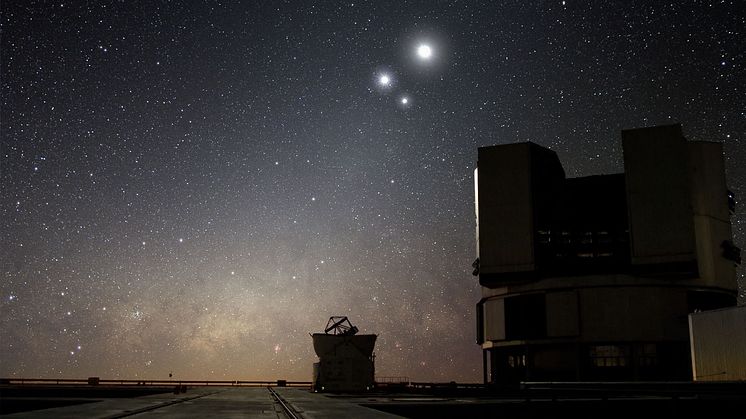Press release -
Uppsala researchers looking for life outside our solar system
Astronomers at Uppsala University will receive a grant of more than SEK 23 million from the Knut and Alice Wallenberg Foundation to search and analyse atmospheres surrounding earth-like exoplanets. Ultimately these researchers hope to find traces of life on these planets.
In 1995 scientists discovered the first planets outside our solar system, so-called exoplanets. The discovery prompted considerable development of instruments to try to find more planets around other stars. These efforts led to the discovery of hundreds of exoplanets, which of course raised the question of whether there are earth-like planets in other solar systems and whether these planets can support life. Thus far it has been determined that exoplanets with earth-like mass and composition exist.
The next logical step in the exploration of exoplanets is to try to discover atmospheres and to analyse their composition. The earth’s atmosphere is the most important factor in stabilizing the temperature and distributing solar heat across the earth’s surface. The earth’s atmosphere also contains molecules that are products of biological processes and show that life is present on earth. It is not easy to carry out the same analysis for other planets, because light coming from the planet's host star is much brighter than light reflected by the planet. However, it is possible to detect the planet's tiny contribution by studying certain spectral lines in high-resolution infrared spectra.
The first observations of huge Jupiter-like exoplanets were performed with the instrument CRIRES at one of the European Southern Observatory’s (ESO) 8-meter telescopes in Chile. The observations show that spectroscopic studies of the atmosphere surrounding an earth-like exoplanet are possible – but not with existing instruments.
Uppsala scientists Nikolai Piskunov and Eric Stempels will now be directing an international collaborative project, CRIRES+, which will elaborate upon the existing instrument. The reconstruction is expected to take 2.5 years, and the new instrument, with its new detectors, will be more sensitive and more stable. For example, CRIRES+ will make it possible to study large wavelength areas that contain spectral lines of key molecules in the planet atmosphere. This creates an entirely new and thus far unexplored window on stars and their planets. It was previously known that several exoplanets have an atmosphere. However, it has thus far not been possible to study the composition of these atmospheres.
For the coming decade, CRIRES+ will be the only instrument in the world equipped to study the atmospheres of earth-like exoplanets. The next generation of huge telescopes is expected to be available in the early 2020s.
For more information on the research, please contact Nikolai Piskunov, tel: +46 (0)18-471 5958, e-mail: nikolai.piskunov@physics.uu.se or
Eric Stempels, tel: +46 (0)18-471 5994, e-mail: eric.stempels@physics.uu.se
Topics
Uppsala University -- quality, knowledge, and creativity since 1477
World-class research and outstanding education of global benefit to society, business, and culture.
Uppsala University is one of northern Europe's highest ranked academic institutions. www.uu.se

